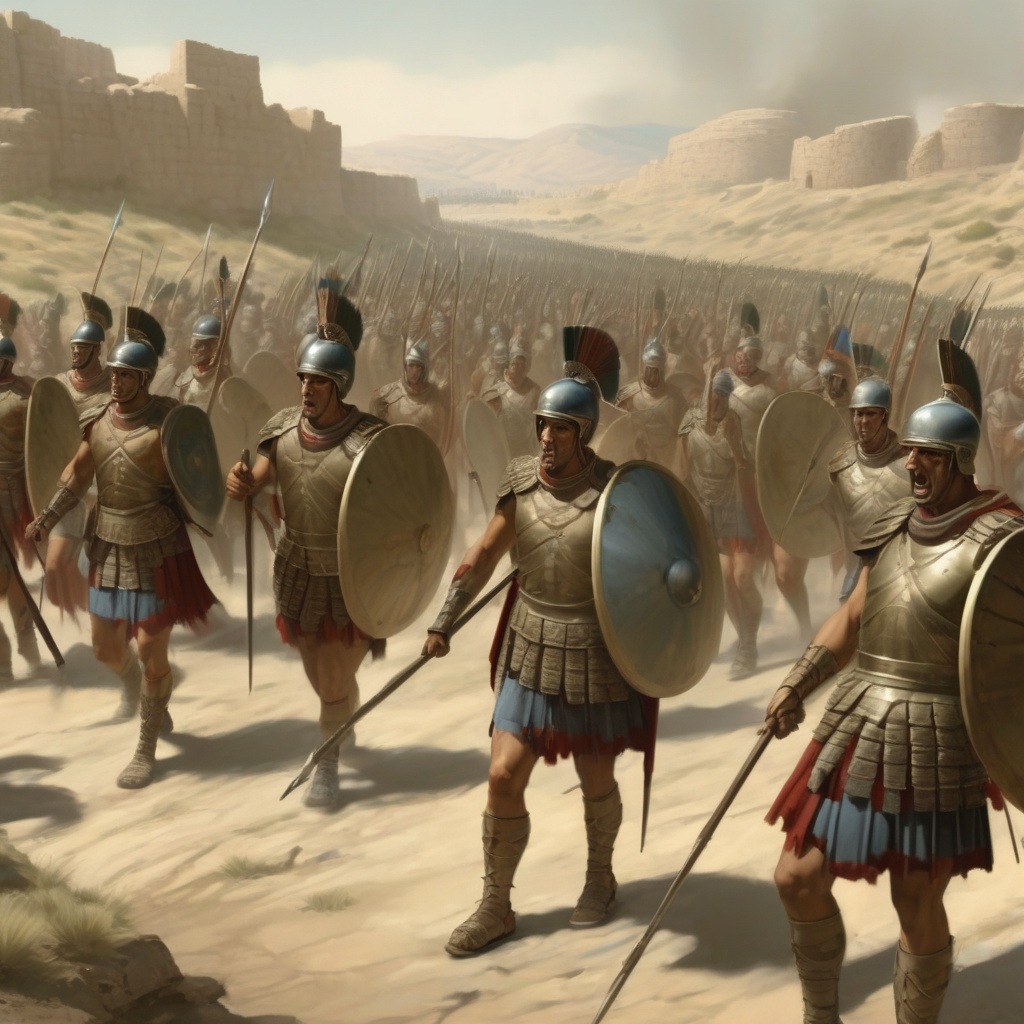The enemy within: How ancient armies handled waste on the march
Warfare is a dangerous business. But one of its most persistent killers isn’t the enemy. It’s the unsanitary conditions that often accompany armies on the march. Throughout history, armies have faced the challenge of dealing with waste while on campaign. From the Roman legions to the Mongol hordes, sanitation has been a crucial factor in maintaining the health and effectiveness of fighting forces.
In ancient times, the issue of waste management was a matter of life and death for armies. Improper disposal of waste could lead to the spread of disease, decimating troops as effectively as any enemy attack. To combat this threat, military leaders developed a variety of strategies to deal with waste on the march.
One common method used by ancient armies was to dig latrines at their campsites. These trenches were used to collect human waste, which could then be covered over to reduce odors and minimize the risk of contamination. By establishing designated areas for waste disposal, armies were able to keep their campsites cleaner and reduce the likelihood of disease spreading through their ranks.
In addition to digging latrines, some armies also employed specialized units to manage waste. These soldiers, known as “pioneers” or “engineers,” were responsible for a variety of tasks related to camp construction and maintenance, including waste disposal. They would oversee the digging of latrines, as well as the construction of rudimentary sewage systems to carry waste away from the campsite. By centralizing waste management in the hands of trained professionals, armies were able to more effectively control sanitation conditions in their camps.
Another challenge faced by ancient armies was the disposal of animal waste. Horses, oxen, and other animals were vital to the military efforts of many ancient civilizations, but their presence also created sanitation issues. To address this problem, some armies designated specific areas for penning animals, keeping them separate from the main camp to reduce the risk of contamination. By carefully managing the location of animal pens and ensuring that waste was regularly removed, armies were able to mitigate the health risks posed by their four-legged companions.
The importance of effective waste management in ancient armies cannot be overstated. By implementing strategies such as digging latrines, employing specialized waste management units, and segregating animal pens, military leaders were able to reduce the risk of disease and keep their troops healthier and more combat-ready. In an era before modern medicine, sanitation was a crucial factor in determining the success or failure of a military campaign.
Today, we may take modern conveniences like indoor plumbing and waste disposal systems for granted. But it’s worth remembering that the challenges faced by ancient armies in managing waste on the march were not so different from our own. By studying how our predecessors dealt with these challenges, we can gain a greater appreciation for the importance of sanitation in maintaining the health and effectiveness of fighting forces throughout history.
So the next time you flush a toilet or take out the trash, spare a thought for the ancient soldiers who marched into battle with the enemy within. Their struggles with waste management may have been a world away from our own, but the lessons they learned are still relevant today.
ancient armies, waste management, sanitation, military history, disease prevention












